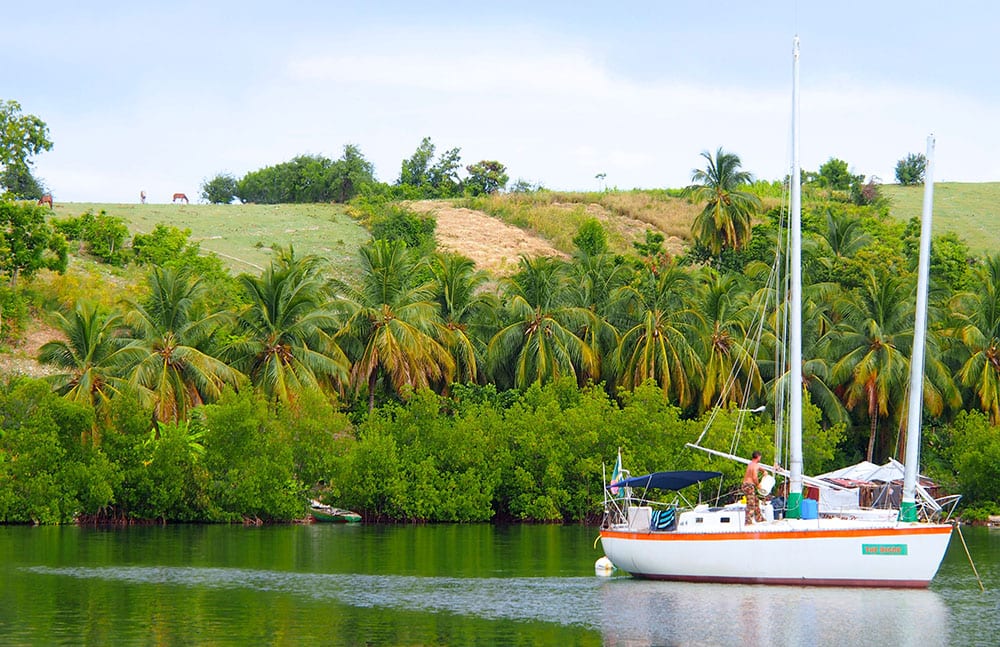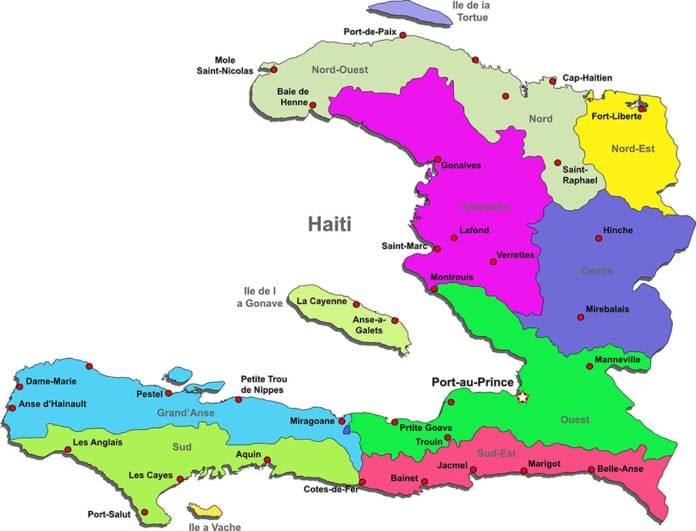Haiti is a Caribbean country that is part of a bigger island named Hispaniola. It shares the island with the much bigger country called the Dominican Republic. Haiti makes up three-fifths of the western portion of Hispaniola, while the Dominican Republic makes up the other five-eighths on the eastern side.
Haiti also contains many smaller islands of its own. You’ll find these islands within 20 to 50 miles from the coastline around the horseshoe shape of the country. There are at least six Haitian islands worth mentioning. Many of them are designed to be tourist attractions because of their beautiful white sandy beaches and other noteworthy recreational activities.
La Gonâve Island
La Gonâve Island is the biggest satellite island of Hispaniola. It is also the biggest offshore Haitian island, which is located within the Gulf of La Gonâve just northwest of the capital city of Port-au-Prince. When the Tainos inhabited the island originally, they referred to the island as “Guanabo.”
La Gonâve Island has a high level of limestone and coral reefs on and around the island. The total length of the island is 37 miles (or 60 kilometers), and the total width is 9.3 miles (or 15 kilometers). The total area of La Gonâve Island is 287 square miles or (743 kilometers squared). The highest altitude that can be reached is 2,552 feet (or 778 meters).
Most of the terrain on La Gonâve Island consists of hills and barren landscape. Haitians do not use the landscape for agricultural purposes because the soil is very dry there. But there was a time when Haitians did go to the island. That was the time when the French enslaved the Haitian people.
Fortunately, the French colonists did not inhabit La Gonâve Island, which allowed slaves to escape to the island and seek refuge.

Île-à-Vache (aka. Cow Island)
Île-à-Vache is another notable Haitian satellite island that goes by a few different names. When the Spanish explorers came to Haiti, they called the island “Isla Vaca.” About a hundred years later, the French came to Haiti and called the island “Île-à-Vache.” That is the official name of it now. The English translation is “Cow Island.”
Île-à-Vache is about 6.5 miles from the southwestern coast of Haiti. There is an estimated 14,000 people living on the island, which many of whom work in the tourism industry. Île-à-Vache is the most popular tourism site in Haiti because it offers the best views of the Caribbean Sea. Tourists will usually stay at the Abaka Bay Resort or the Port Morgan Resort.
Les Cayemites
Les Cayemites represents a pair of Haitian islands that are within close proximity of each other. They are found just off the southwestern coast of the country. The names of the islands are Petite Cayemite and Grande Cayemite. Their combined total land area is 17 square miles (or 45 square kilometers).
The larger of the two islands is Grande Cayemite. It is to the east of the smaller island, Petite Cayemite. The name “petite” and “grande” are easy ways to tell which islands are smaller and bigger. The closest Haitian city is 22 miles from Les Cayemites, which is the city of Jeremie.
Les Cayemites does not offer resort accommodations, but you can certainly visit the islands by boat. There are local boat operators who will take tourists to the islands for a temporary swim and visit.
Tortuga Island (aka. Turtle Island)
Tortuga Island can be found just off the northwestern coast of Haiti. The size of the island is approximately 69 square miles (or 180 square kilometers). According to a 2003 Census, the population on the island is 25,936 people. The tourism industry is very active on the island because of its beautiful beaches and vast history of Caribbean piracy.
With the success of Disney’s Pirates of the Caribbean franchise, tourists love to visit Tortuga Island because it used to be a Caribbean piracy epicenter back in the 17th century. When you visit the island, you can find a lot of souvenirs and other memorabilia related to the real Caribbean piracy that took place around those waters.
The word “Tortuga” translates to “Turtle.” Legend has it that Christopher Columbus arrived at Tortuga during their first trip to the Americas. It was Columbus who named the island Tortuga because the shape of the island resembled the shape of a turtle shell.
Grosse Caye
Grosse Caye is a satellite Haitian island that is slightly northeast of another satellite Haitian island called Île-à-Vache. It is only 2 miles from the coast of the Haitian mainland. There are no major resorts or hotels on the island, so you cannot stay there overnight. But you can certainly take a boat ride there for a visit and experience the gorgeous tropical paradise that it is firsthand.
Navassa Island
Navassa Island is one of the smallest Haitian islands. It is completely uninhabited and located southwest of the Haitian peninsula. However, the United States has been in a territorial dispute with Haiti over who really has claim to the island. The United States believes it has had rights over the island since the year 1857, due to the 1856 Guano Islands Act.
Navassa Island is only roughly 2.1 square miles. There are long vertical white cliffs which surround the island like a ring. Some areas of these cliffs go as high as 15.2 meters (or 50 feet). Tourists like to ride by the island in their boat and admire the cliffs from afar.

